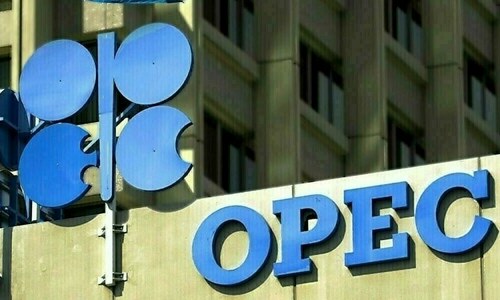OPEC+ Boosts Oil Output Amid Supply Concerns
OPEC+ nations have consented to increase oil production by 547,000 barrels daily for September. This decision continues a sequence of expedited output escalations aimed at recovering market share, amidst growing anxieties regarding potential supply disruptions linked to Russia.
This action signifies a comprehensive and accelerated reversal of OPEC+’s most substantial output reductions, along with an independent production augmentation for the United Arab Emirates. This totals roughly 2.5 million barrels per day, or approximately 2.4% of global demand.
A concise virtual meeting was conducted by eight OPEC+ members, amidst amplified pressure from the U.S. on India to cease Russian oil acquisitions. This is part of Washington’s endeavors to bring Moscow to the negotiation table for a peace accord with Ukraine.
Following the meeting, OPEC+ issued a statement citing a robust economic climate and diminished inventories as justifications for its resolution.
Despite OPEC+’s augmented output, oil prices have remained elevated, with Brent crude closing near $70 a barrel, a rise from its April low. This price point is sustained, in part, by escalating seasonal demand.
Amrita Sen, co-founder of Energy Aspects, noted that with relatively robust oil prices, OPEC+ has some assurance regarding market fundamentals. She added that the market structure also indicates tight inventories.
The eight participating nations are slated to reconvene on Sept. 7, at which point they may deliberate reinstating another layer of output reductions totaling approximately 1.65 million barrels per day, according to sources. These cutbacks are currently slated to remain in effect until the conclusion of the following year.
The broader OPEC+ alliance includes 10 non-OPEC oil-producing nations, prominently Russia and Kazakhstan.
The group, responsible for approximately half of the world’s oil production, had been moderating output for several years to bolster oil prices. This year, it shifted course to regain market share, influenced by calls to amplify production.
The eight nations initiated production increases in April with a modest augmentation of 138,000 barrels per day, succeeded by more substantial-than-anticipated increases of 411,000 barrels per day in May, June, and July, 548,000 barrels per day in August, and now 547,000 barrels per day for September.
UBS’s Giovanni Staunovo stated that the market has effectively assimilated these additional barrels, partly due to stockpiling activity in China. He noted that attention will now shift to decisions regarding Russia.
Alongside the voluntary reduction of approximately 1.65 million barrels per day from the eight members, OPEC+ maintains a 2-million-barrel-per-day reduction across all members, which is also set to expire at the close of 2026.
Jorge Leon of Rystad Energy, and a former OPEC official, commented that OPEC+ has successfully navigated its initial challenge by fully reversing its most significant reduction without triggering a collapse in prices.
Leon added that the subsequent task will be more demanding, involving the determination of if and when to unwind the remaining 1.66 million barrels, all while managing geopolitical tensions and upholding unity.



Comments (0)
No comments yet. Be the first to comment!
Leave a Comment